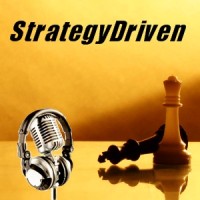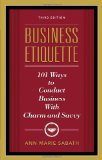Don’t Fail Like Edison Did
Tales of successful innovation are told – as good stories ought to be – in linear fashion, with the focus on a single triumphant hero. For example: Edison realized the potential for creating light with electricity, tested a wide variety of light-bulb filaments, and finally came up with one that worked well.
The implication is that innovation proceeds in a neat, orderly progression, from our hero recognizing the need, to testing solutions, and finally, rolling out the best one and smiling all the way to the bank.
Not so fast! The reality of innovation is very different from the historical depiction of it. Innovation is messy and wasteful, and it rarely moves in a straight line from problem to solution. The history of the light-bulb illustrates the gap between how we like to recall innovation, and how it really happens.
While Edison and his lab played an important role by contributing a design that made it into commercial use for a time, the fact is that Edison did not invent either the modern incandescent or fluorescent bulbs. Edison’s light bulb design, a thin piece of carbon in a vacuum, is not in use today. Our bulbs are either based on the tungsten filament patented by Willis R. Whitney in 1903, or the mercury vapor light patented by Peter Cooper Hewitt in 1901. Edison is not the father of modern light-bulbs, he is more like a first cousin twice removed.
Hi there! This article is available for free. Login or register as a StrategyDriven Personal Business Advisor Self-Guided Client by:
Subscribing to the Self Guided Program - It's Free!
About the Author

, Marketing For Dummies
, and Marketing Kit for Dummies
. A lecturer at the business school at the University of Massachusetts, Amherst, he has consulted with many Fortune 500 firms and large U.S. government agencies.

 StrategyDriven Podcasts focus on the tools and techniques executives and managers can use to improve their organization’s alignment and accountability to ultimately achieve superior results. These podcasts elaborate on the best practice and warning flag articles on the StrategyDriven website.
StrategyDriven Podcasts focus on the tools and techniques executives and managers can use to improve their organization’s alignment and accountability to ultimately achieve superior results. These podcasts elaborate on the best practice and warning flag articles on the StrategyDriven website.
 Ann Marie Sabath, author of
Ann Marie Sabath, author of  Sharon Armstrong, author of
Sharon Armstrong, author of  Michael MacNair owns MacNair Travel Management, a privately owned American Express Representative Office, which has helped organizations develop a clear Travel Management System that delivers unparalleled value and exceeds expectations. MacNair Travel is a Travel Leadership Consulting Firm because of its proactive consulting toward the development of a cutting-edge travel plan, dedication to unbiased rate searches that save money and time, and dedicated service teams that build confidence. Michael MacNair, author of
Michael MacNair owns MacNair Travel Management, a privately owned American Express Representative Office, which has helped organizations develop a clear Travel Management System that delivers unparalleled value and exceeds expectations. MacNair Travel is a Travel Leadership Consulting Firm because of its proactive consulting toward the development of a cutting-edge travel plan, dedication to unbiased rate searches that save money and time, and dedicated service teams that build confidence. Michael MacNair, author of  Ann Marie Sabath is the founder of At Ease Inc., the 23-year old business protocol and development Cincinnati training firm. Her Strategies for Gaining That Competitive Edge in Today’s Workplace and other business development programs is a regular part of many organization’s Business Development programs. Sabath also is the author of eight books on domestic and international etiquette. Her newest release,
Ann Marie Sabath is the founder of At Ease Inc., the 23-year old business protocol and development Cincinnati training firm. Her Strategies for Gaining That Competitive Edge in Today’s Workplace and other business development programs is a regular part of many organization’s Business Development programs. Sabath also is the author of eight books on domestic and international etiquette. Her newest release,